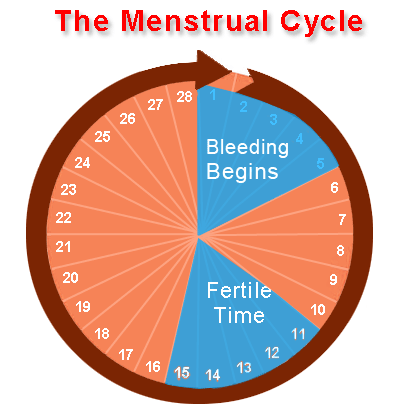In nature, for a female, getting pregnant and giving birth to a new born is her sole purpose. Its like females are destined to be. One of the greatest things in this world for women is to become a mother. Her care and love for her child is incomparable. The transformation from a girl to a woman is a remarkable. During her childhood, when it comes to growing up, a girl is no different than a boy. But things suddenly start changing for her as soon as she steps in her teenage with commencement of Menstrual Cycle. Due to flow of Hormones during her cycle there is blood discharge from vagina which is completely normal and a sign of a girl stepping into her Womanhood. Usually, first menstruation occurs between age of 12 and 13. Menstrual Cycle is crucial, as during the process there are several hormones involved that produces egg or ovum through an event called ovulation. In other words, a woman with absence of menstrual cycle is infertile as there is no egg present for sperm to enter and fertilize.
PHASES OF MENSTRUAL CYCLE
# FOLLICULAR PHASE:
Follicular stimulating hormone (FSH) causes the development and maturation of ovarian follicles. As the follicle enlarges, estradiol progressively rises and reaches its peak value 24 hours before LH and FSH attain their respective maximum levels. LH surge or peak initiates ovulation-release of ovum from the ruptured follicles. The levels of progesterone are low during follicular phase.
# LUTEAL PHASE:
After the ovulation occurs, the ruptured follicles form corpus luteum and start producing progesterone and estradiol. The predominant hormone of luteal phase is progesterone which prepares the endometrium of uterus for implantation of the fertilized ovum. LH maintains the corpus for a few days. In the absence of implantation, the corpus luteum regresses and sheds endometrium causing menstruation. And another new cycle begins.
The luteal phase is always fixed, with 14 ± 2 days in length. The observed variations in the length of menstrual cycle are due to changes in the follicular phase. In case of implantation of fertilized ovum, human Chorionic Gonadotropin (hCG) is produced by the cells of implanted early embryo. hCG stimulates corpus luteum to synthesize progesterone. This continues till the placenta starts making high quantities of progesterone.
# MENOPAUSE:
The menstrual cycles which begin in the women after Puberty, continue till the age of 45-50. The cycles cease around this age which coincides with the loss of ovarian function. The progesterone and estrogen levels are very low in these women. However, the concentration of LH and FSH are elevated due to lack of feedback inhibition of estrogens.
Postmenopausal women are susceptible to two complications associated with insufficient levels of sex hormones.
- Atrophy of secondary sex tissues:Mainly the epithelial tissue of vagina and lower urinary tract.
- Osteoporosis:Decreased density of bones and increased susceptibility to fractures.
Women often experience heavy periods which can be quite disturbing. Symptoms differ according to age and health status.
- Abdominal cramps
- Nausea and vomiting
- Loss of appetite
- Loss of sex drive
- Constipation
- Indigestion
- Acne
- Dizziness
- Diarrhea
- Depression
- Headache
Soothing the after-effects of menstrual cycle is possible through medications and can even be used for premenstrual symptoms. Dynamet-A can be used in case of abdominal cramps, Milex-A can be used in case of headache associated with menstruation and mood change, Cucal in case of osteoporosis in post-menopausal and Perimenopausal and prevents bone fracture, Cumin-F in nausea and vomiting associated with menstruation, Cunatone is specially designed for women who suffers from frequent miscarriages and it protects fetus from miscarriage. These all drugs belong to PCD pharma companies.








